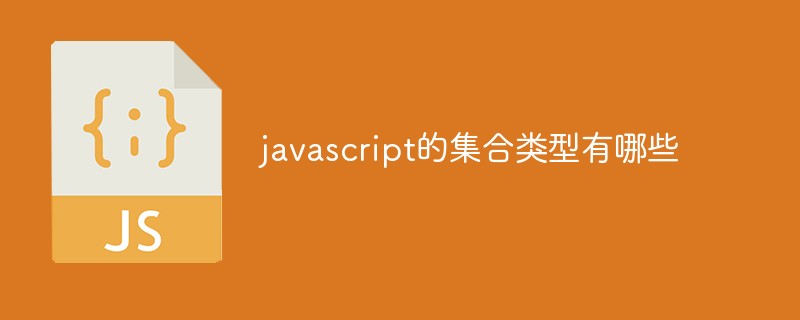Home >Web Front-end >Front-end Q&A >What are the collection types of JavaScript?
What are the collection types of JavaScript?
- 青灯夜游Original
- 2022-04-11 12:03:582812browse
There are three types of collection types: 1. Map type. The Map collection stores key-value pairs. The keys cannot be repeated, but the values can be repeated. 2. Set type. The objects stored in the Set are unordered and cannot be Repeated, the objects in the collection are not sorted in a specific way; 3. List type, the objects stored in the List are ordered and repeatable, and the query speed is high.

The operating environment of this tutorial: windows7 system, javascript version 1.8.5, Dell G3 computer.
There are three collection types in JavaScript: set, list and map.
1. Map (key-value pairs, unique keys, non-unique values):
Map is a set of key-value pair structures, which is extremely fast search speed. Created by passing in an array of arrays. Add new elements by calling .set(key,value).
var m = new Map([['Michael', 95], ['Bob', 75], ['Tracy', 85]]); m.get('Michael'); // 95 m.set('Adam', 67); // 添加新的key-value
For example, suppose you want to find the corresponding grades based on the names of classmates. If you use Array to implement it, you need two Arrays:
var names = ['Michael', 'Bob', 'Tracy']; var scores = [95, 75, 85];
Given a name, you want to find the corresponding grades. You need to first find the corresponding position in names, and then retrieve the corresponding results from scores. The longer the Array, the longer it takes.
If implemented using Map, only a "name"-"score" comparison table is needed, and the results can be searched directly based on the name. No matter how big the table is, the search speed will not slow down.
Write a Map in JavaScript as follows:
var m = new Map([['Michael', 95], ['Bob', 75], ['Tracy', 85]]); m.get('Michael'); // 95
Initializing the Map requires a two-dimensional array, or directly initialize an empty Map.
Map has the following methods:
var m = new Map(); // 空Map m.set('Adam', 67); // 添加新的key-value m.set('Bob', 59); m.has('Adam'); // 是否存在key 'Adam': true m.get('Adam'); // 67 m.delete('Adam'); // 删除key 'Adam' m.get('Adam'); // undefined
Since one key can only correspond to one value, if you put value into a key multiple times, the subsequent value will flush out the previous value:
var m = new Map(); m.set('Adam', 67); m.set('Adam', 88); m.get('Adam'); // 88
1) Properties and methods
Definition: A collection of key/value pairs.
Syntax: mapObj = new Map()
Note: The keys and values in the collection can be of any type. If you add a value to the collection using an existing key, the new value replaces the old value.
| Map Object Properties | Description |
|---|---|
| Constructor | Specify the function that creates the mapping |
| Prototype — Prototype | Returns a reference to the prototype for the mapping |
| Constructor | Return the number of elements in the map |
| Description | |
|---|---|
| Remove all elements from the map | |
| Remove from the map The specified element | |
| Performs the specified operation on each element in the map | |
| Return the specified element in the map | |
| If the map contains the specified element, return true | |
| Return the string representation of the map | |
| Add a new element to the map | |
| Returns the primitive value of the specified object |
The above is the detailed content of What are the collection types of JavaScript?. For more information, please follow other related articles on the PHP Chinese website!
Related articles
See more- Take you to learn the File API, Streams API and Web Cryptography API in JavaScript
- Completely master the differences and usage of DOM and BOM in JavaScript
- JavaScript takes control of new
- JavaScript cannot create objects
- Is javascript a java program?
- What is the relationship between ES5 and JavaScript?
- How to make input non-editable in javascript

